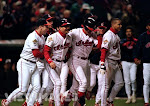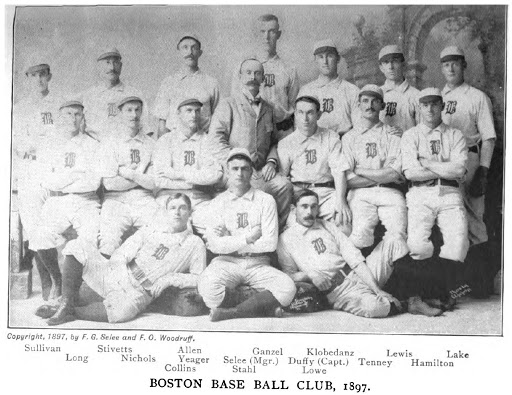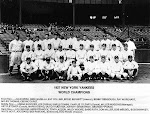I apparently enjoy gaming out various scenarios for this league and making ballparks for it as much as I do playing it. Not that there's anything wrong with that. As seems to have been the case all along, the new ballparks and gaming out parts are reinforcing one another.
The thing that's on my mind right now is the All-Star Game. Historically, the first All-Star game was in 1933. But there's no particular reason they couldn't have been held earlier, and there are articles showing that the idea was being advocated back in 1915 or so (maybe I'll link them later). Scheduling an All-Star game might have been a logistical challenge, but since I'm not doing more than requiring things to be plausible, I think that's OK. So, I'm planning on an All-Star game starting in 1917. Where should it be held?
The contemporary advocates for an All-Star Game back then said it should be in one of the biggest cities. Washington DC seems like another obvious possibility. The newest, most impressive ballparks of the time were Shibe Park in Philadelphia, Forbes Field in Pittsburgh, and Comiskey Park in Chicago. Maybe Ebbets Field? In any case, the central location of Philadelphia relative to so many of the other MLB cities I have points to that as the location.
However, the idea of a neutral site has also occurred to me, especially with the rationale of getting major-league baseball out to places that don't typically get it and getting people excited about it. So, I looked for stadia that were appropriately-sized and in a reasonable location that didn't already have an MLB team. Turns out there really aren't any. At one point I thought the Yale Bowl would work, and New Haven is a neat spot midway between Boston and New York. Yale Bowl was a big deal when it was built. The problem was that it was built pretty specifically as a football stadium, and there's no way to reasonably put a baseball field in there, especially for an event that's seeing itself as this important. Another idea that occurred to me was holding it in LA after the end of the season (since a mid-season trip to LA did not strike me as plausible in 1917), but it struck me that that approach would be very unpopular in reality, both with most of the baseball-loving public and with the players. And also the owners.
At that point, the new ballpark thing struck--I've been thinking about Negro League ballparks that I could model as a community service and had started doing Inlet Park in Atlantic City. At that point it struck me that Atlantic City would be a great spot for the All-Star Game--close to the major East Coast cities, geared toward tourism, willing to spend some cash, and looking for new stuff. The Miss America Pageant started in 1921. A sports complex was established at Bader Field in the early 20s, though baseball wasn't an early driver there as far as I can see. One could imagine, though, the Atlantic City leadership approaching MLB after the ASG gets established and cutting a deal--we'll build a proper stadium (at Bader Field?) if you agree to hold the ASG there for 3 years or 5 years or whatever. I think some of the western cities might grumble, so maybe it'd be in Atlantic City 2 years out of every 3 or something. There's no obvious western counterpart to Atlantic City, so maybe it'd go to St. Louis or Chicago. Alternately, maybe it'd go to Brookside Stadium? It could be fun to hold the ASG there, even if the facilities are non-existent, just to have a 100k crowd....








